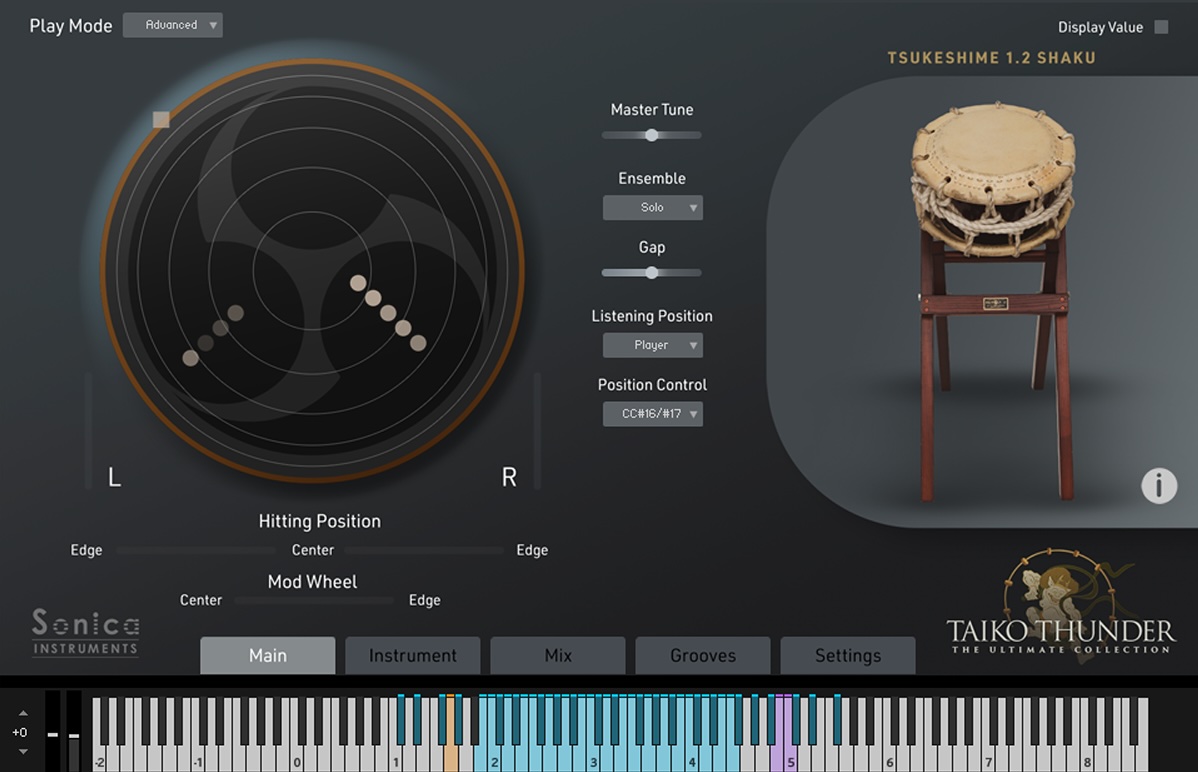
Know Your Taiko: Meet the Instruments That Define a Tradition — Part 1: The Shime-daiko
What sound comes to mind when you hear the word “taiko”? You might imagine the pounding taiko at bon odori dances or festivals. Or maybe the intense taiko tracks heard in movie scores. In truth, taiko include a broad range of percussion instruments that produce many varied sounds and textures.
This series of blog posts presents the many taiko instruments included in our TAIKO THUNDER: The Ultimate Collection library. Because we believe learning just a little about the characteristics of these instruments, and how they are used, will increase your appreciation and enjoyment of the wonderful world of taiko.
This first post looks at two types: the shime-daiko and the nagado-daiko.
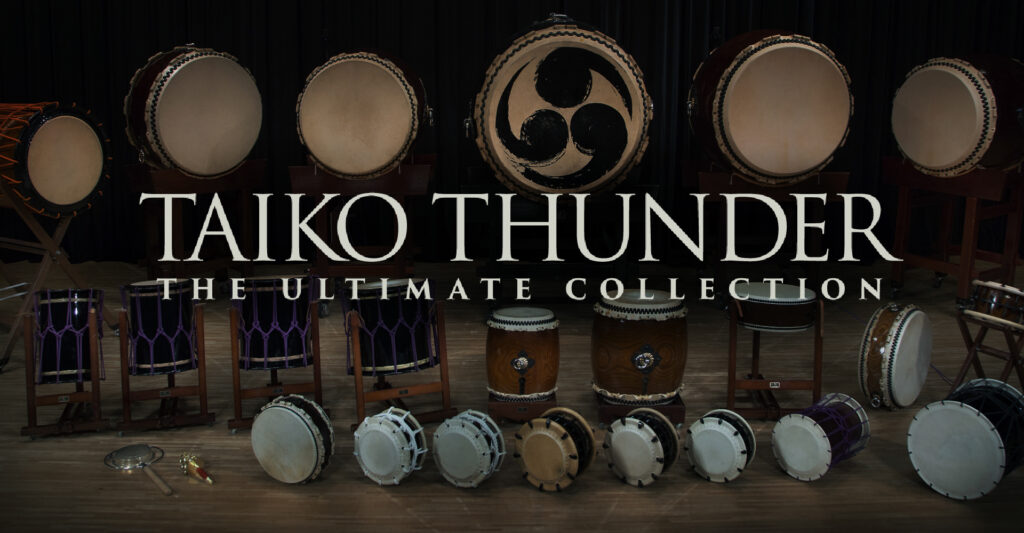
$695
TAIKO THUNDER: The Ultimate Collection is, in essence, 20 separate sound libraries — consisting of 16 taiko instruments and four percussion instruments — that cover all taiko sounds necessary for modern music making.
The collection features realistic sound variations from different hitting positions, special tone-shaping parameters for finding the perfect sound, and as many as seven separate mic channels with individual controls including hall reverb. All these features add up to a next-generation taiko library for every musical situation.
Tsukeshime-daiko
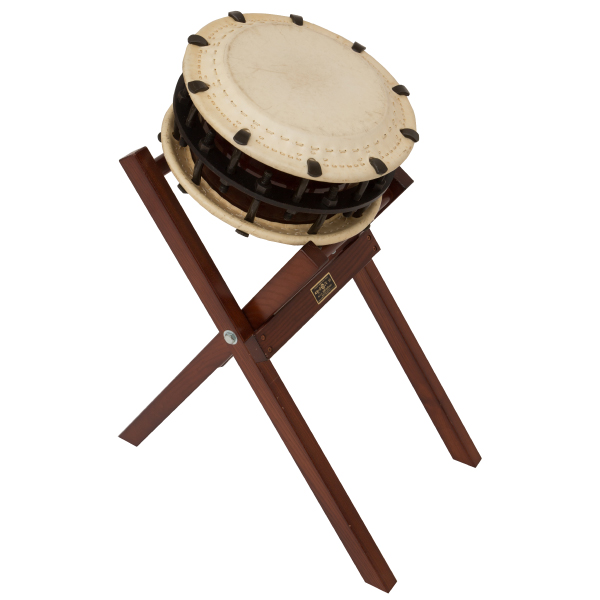
The tsukeshime-daiko consists of two heads skins stretched over steel rings that are bound together and tensioned with cords or bolts.
The drum is distinctive for its gorgeous sharp, high-pitched sound. Its pitch can be tuned by adjusting the binding tension. The tsukeshime-daiko plays a central role in an ensemble, as its powerful sound is ideal for setting the rhythm and tempo of a piece and maintaining the rhythmic feel.
The head skins vary in thickness and are measured in units called cho-gake. The thinnest skin is about 11 mm (one cho-gake, also called namitsuke) and skins go up in thickness from two cho-gake (~19 mm) to five cho-gake (~29 mm). The thicker the skin, the harder and stiffer the drum’s sound and response.
The library includes four tsukeshime-daiko sizes: 33 cm (1 shaku 1 sun in traditional units), 36 cm (1 shaku 2 sun), 36.6 cm (1 shaku 2 sun 2 bu), and 39 cm (1 shaku 3 sun).
Shimeshishi-daiko
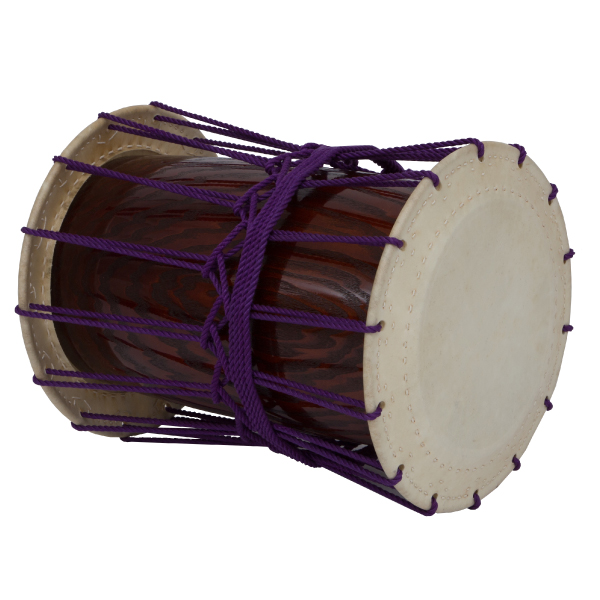
The shimeshishi-daiko emerged from the stage of the taiko group Kodo as an extension of the tsukeshime-daiko. Its biggest distinction is the use of different leathers on each side: one side is cowhide and the other is horsehide.
It is an idiosyncratic instrument with a piercing, dry sound full of presence that makes it stand out even in a massive ensemble.
Nagado-daiko
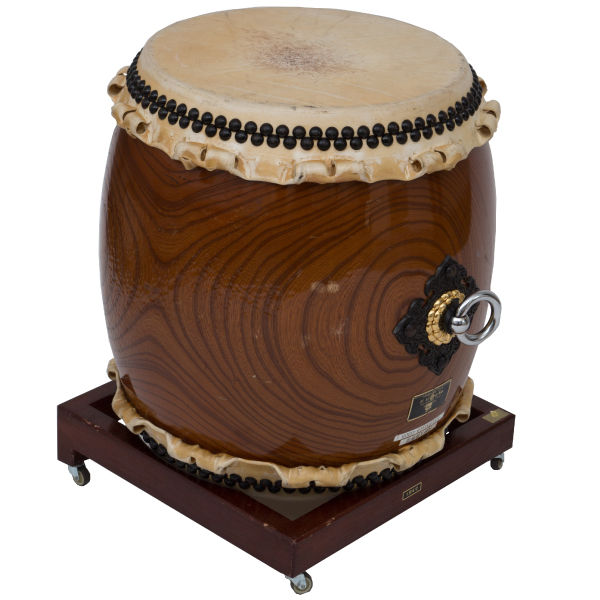
Literally meaning “long barrel”, the nagado-daiko is easy to recognize because the drum body is longer than the drumhead diameter. Frequently seen on stages, at bon dances, and many other settings, the nagado-daiko is what many people imagine when they think of taiko instruments. It is also called miya-daiko [Shinto shrine drum] because it’s often used at Shinto shrines and other religious events.
The nagado-daiko is made by hollowing out a single piece of wood so the sound will resonate inside the body, creating its distinctive deep and booming tone.
The drum’s sound varies considerably depending on where the drumhead is struck, allowing for a variety of tonal expressions with just a single drum by combining various drum strokes.
The library includes three nagado-daiko sizes: 36 cm (1 shaku 2 sun in traditional units), 48 cm (1 shaku 6 sun), and 81 cm (2 shaku 7 sun).
